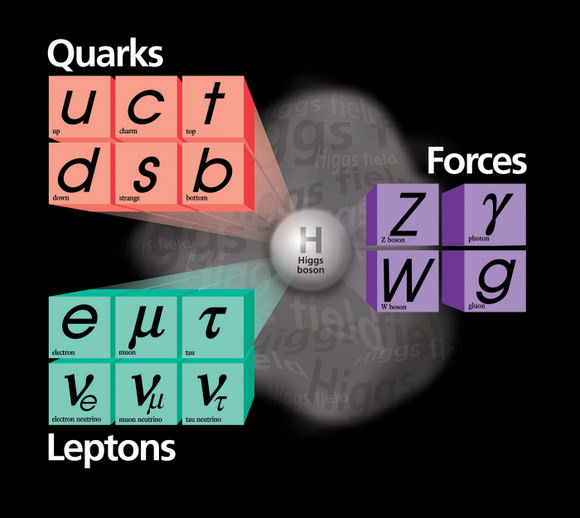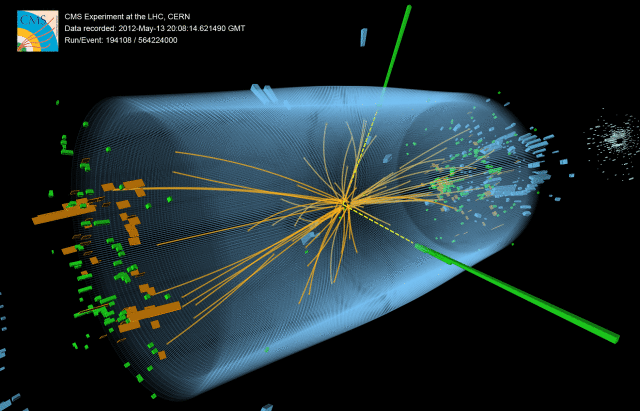That was fast! Just one year after a Higgs Boson-like particle was found at the Large Hadron Collider, the two physicists who first proposed its existence have received the Nobel Prize in Physics for their work. François Englert (of the former Free University of Brussels in Belgium) and Peter W. Higgs (at the University of Edinburgh in the United Kingdom) received the prize officially this morning (Oct. 8.)
The Brout-Englert-Higgs (BEH) mechanism was first described in two independent papers by these physicists in 1964, and is believed to be responsible for the amount of matter a particle contains. Higgs himself said this mechanism would be visible in a massive boson (or subatomic particle), later called the Higgs boson. Check out more information on what the particle means at this past Universe Today article by editor Nancy Atikinson.
“The awarded theory is a central part of the Standard Model of particle physics that describes how the world is constructed. According to the Standard Model, everything, from flowers and people to stars and planets, consists of just a few building blocks: matter particles. These particles are governed by forces mediated by force particles that make sure everything works as it should,” the Royal Swedish Academy of Sciences said in a statement.

“The entire Standard Model also rests on the existence of a special kind of particle: the Higgs particle. This particle originates from an invisible field that fills up all space. Even when the universe seems empty this field is there. Without it, we would not exist, because it is from contact with the field that particles acquire mass. The theory proposed by Englert and Higgs describes this process.”
A very thrilled CERN (the European Organization for Nuclear Research) noted that the Standard Model theory has been “remarkably successful”, and passed several key tests before the particle was unveiled last year in ATLAS and CMS experiments at the Large Hadron Collider.

“The discovery of the Higgs boson at CERN last year, which validates the Brout-Englert-Higgs mechanism, marks the culmination of decades of intellectual effort by many people around the world,” stated CERN director General Rolf Heuer.
CERN added that the discovery last year was exciting, but the Higgs boson only explains only the matter that we can see. CERN is among the organizations on the hunt for dark matter and energy, forms that can’t be sensed with conventional observatories but can be seen through their effects — such as gravitational lensing.
Sources: CERN, The Royal Swedish Academy of Sciences

